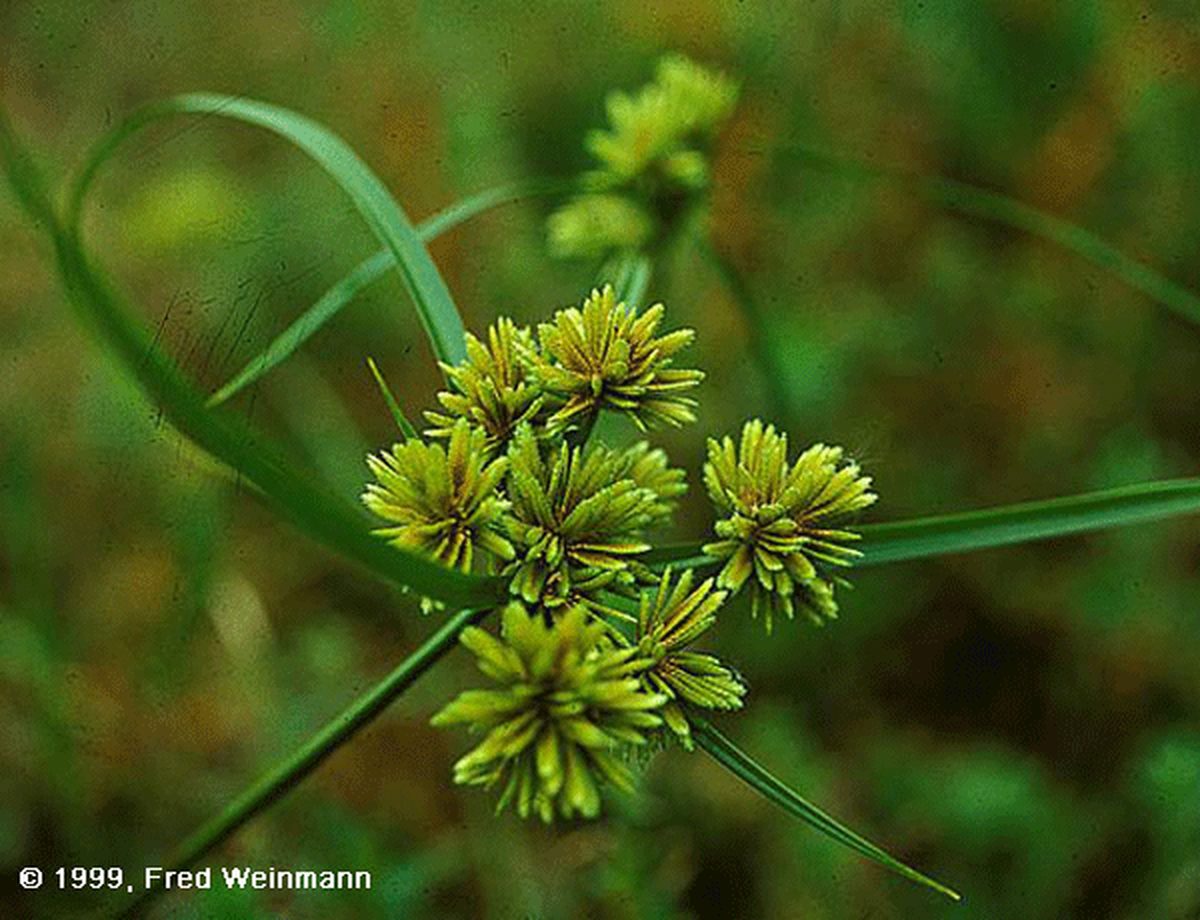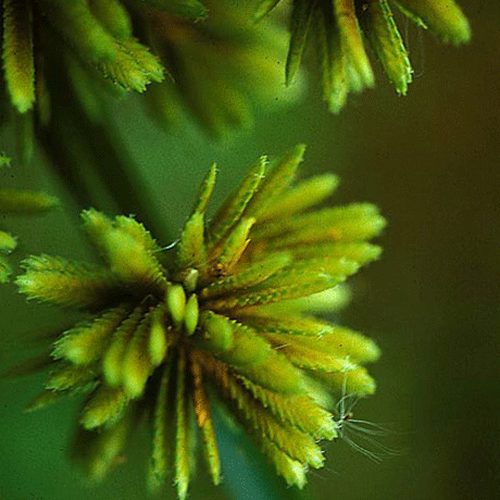Tall Flatsedge
Cyperus eragrostis

Family: Cyperaceae
Other Common Names: lovegrass sedge, drain flat sedge, umbrella sedge, pale galingale
Weed class: monitor list
Year Listed: 2012
Native to: Parts of North and South America
Is this Weed Toxic?:
not known to be
Why Is It a Noxious Weed?
This plant is on the monitor list. Please contact Allison Bachner (abachner@kingcounty.gov) to report locations or for more information.
How would I identify it?
General Description
Tall flatsedge is a tufted, sedge-like, perennial plant with rhizomes.
Flower Description
Inflorescense is a spherical head of rays of spikelets (usually flat). Rays 3-10 and 1-2 inches (2.5-5 cm) long. Spikelets off-white to golden brown.
Leaf description
Leaves are flat or v-shaped, typically 9.8-19.7 inches (25-50 cm) long by 0.2-0.3 inches (5-8 mm) wide. The slender leaves grow from the base of the stem, and about 4-8 involucral leaf-like bracts exceed the inflorescence.
Stem description
Stems (culms) are triangular to round in cross section, hairless and 1.3-3 feet (40-90 cm) tall.
Fruit Seed Description
Dark brown to black achene, broadly ellipsoid 1.2–1.4 by 0.5–0.6 mm.
May Be Confused With
Similar to a Class B noxious weed, yellow nutsedge (Cyperus esculentus). Yellow nutsedge has a loose, open inflorescence--not in a dense, spherical cluster like tall flatsedge.
Where does it grow?
Tall flatsedge grows in damp grasslands, roadsides ditches, vernal pools, streambanks, irrigation channels and also grows in gardens, parks, disturbed sites, waste areas and damp habitats like wetlands.
How Does it Reproduce?
Plants reproduce by seed and vegetatively by rhizomes.
How Do I Control It?
Please refer to the PNW Weed Management Handbook, or contact your county noxious weed coordinator.
For More Information
WTU image database information on Cyperus eragrostis
Weeds of Australia Cyperus eragrostis
Western Australian Flora information on Cyperus eragrostis




